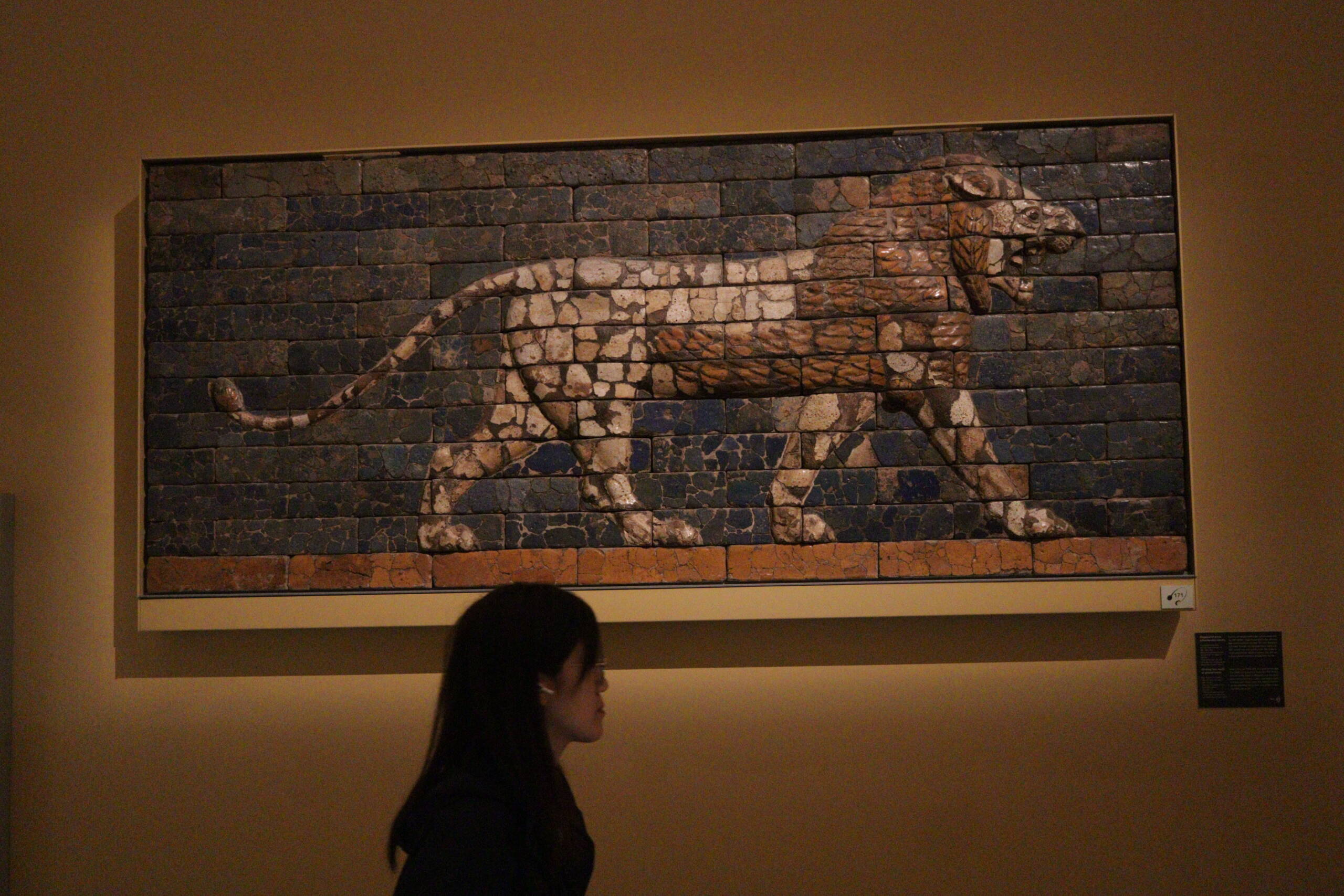The Kunsthistorisches Museum in Vienna is full of treasures that overwhelm with their opulence—Bruegel’s sprawling landscapes, Titian’s rich colors, Vermeer’s intimate quiet. And then, unexpectedly, you turn a corner and find yourself face to face with a lion that once guarded the streets of Babylon. A single relief, part of a great sequence from the Ishtar Gate, it looks both monumental and oddly dislocated: a fragment of imperial propaganda now hanging politely on a beige wall, far from its original home.

The lion itself is magnificent in its severity. Its mane is patterned into stiff, almost geometric ridges, each curl more rigid than lifelike, while its mouth opens in a roar that is less about realism than about projection of force. Babylonian artisans didn’t want naturalism—they wanted symbolism. The lion was divine wrath, royal authority, protective strength, all pressed into clay and fired into permanence. Even the background tells its own story: deep cobalt-blue glazed bricks, painstakingly made, which once stretched for miles along Nebuchadnezzar’s ceremonial way, radiating a glittering, otherworldly presence.
But here’s the curious thing: as I looked at the piece, someone walked into the frame. A woman, her profile caught in the dim museum light, passed just beneath the lion. She was quiet, thoughtful, the kind of visitor who doesn’t rush but glides, eyes moving between labels and textures. And in that fleeting moment, something shifted. The lion no longer roared at the faceless masses of Babylon, it roared at her—one individual, centuries later, who wasn’t intimidated but reflective. That tension felt almost mischievous: a beast once meant to terrify an empire now reduced to sparking quiet wonder in a single passerby.
This juxtaposition lingers. The lion above is all authority and permanence; the visitor below is transitory, soft, alive. Yet it is her presence that animates the piece again. Without the visitor, the relief is mute, an artifact. With her, it becomes dialogue. The roar collides with modern silence, and the museum space itself transforms into a kind of stage where power, fragility, history, and curiosity mingle. Perhaps that’s the final irony: what was once a display of control has become a spark of contemplation. The empire is gone, but the conversation—between brick, beast, and passerby—continues in Vienna.
Leave a Reply